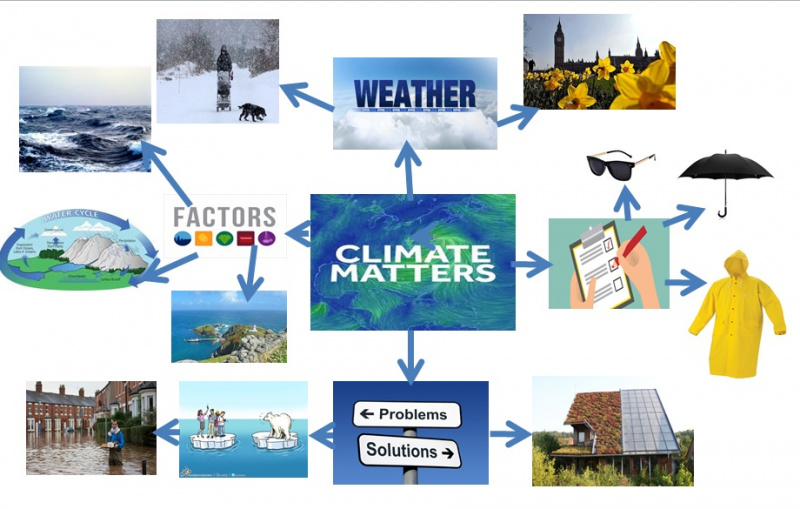Результаты исследований учащихся в проекте Climate and weather of Great Britain
Содержание
Авторы и участники проекта
Участники: Gryffindor
Тема исследования группы
What’s the climate of Scotland like?
Каков климат в Шотландии?
Проблемный вопрос (вопрос для исследования)
What are the peculiar properties of the climate of Scotland?
Цели исследования
- Узнать, каков климат в Шотландии
- Определить, как климат Шотландии отличается от климата других регионов
- Выяснить, какие факторы влияют на формирование климата Шотландии
- Отследить меры по борьбе с изменением климата в регионе.
Результаты проведённого исследования
Scotland's climate is generally cool and wet. It is influenced by the North Atlantic Drift, a warm sea current from the Caribbean, which keeps Scotland's coast ice free in winter. The climate is oceanic, with no extreme variations or exceptional events like tornadoes, droughts or widespread floods, but the day to day weather can vary enormously and unpredictably, and is a national source of daily conversation.
The east coast has a marginally more continental climate than the west, with drier weather, sunnier summers and colder winters. The prevailing winds are from the west and southwest, and are constant and important feature in the islands and high hills. Scotland's climate is generally cool and very wet. The average annual high temperature is around 11 degrees Celsius (51° Fahrenheit). The climate is oceanic; however the day to day weather can vary enormously and is very unpredictably. The east coast has a marginally more continental climate than the west, which has drier weather, sunnier summers and colder winters. The wettest parts of Scotland experience an average of 250 days of rain per year, whereas the driest parts only experience an average of about 150 days of rain per year. The average number of days with snow falling in Scotland ranges from 15 to 20 days, whereas on the peaks and mountains the average number of days with snow falling is about 100 days. Scotland is generally cloudier than England. The coldest parts of Scotland are the higher areas, with an average of only 1100 hours of sun per year. The UK is well known for the variability of its weather - from day to day, season to season, year to year and place to place. Its position in the mid-latitude westerly wind belt on the edge of the Atlantic Ocean with its relatively warm waters, yet close to the continental influences of mainland Europe, plays a major role in this. Changes in topography and land use over relatively short distances, together with a long coastline and numerous islands, all add to the variety of weather.
In general, places in the east and south of the UK tend to be drier, warmer, sunnier and less windy than those further west and north. Also, these favourable weather conditions usually occur more often in the spring and summer than in autumn and winter. But that is by no means the whole story, and these climate descriptions illustrate the all-important regional and seasonal variations. The sea is cold all year round: in winter, given the latitude, it's relatively mild, since it reaches a minimum of 7 °C (45 °F) in February and March, while in summer it doesn't go above 14 °C (57 °F) from July to September.
Scotland's government is taking part in fighting climate change. The Scottish government's targets for cutting greenhouse gas emissions have been strengthened, as MSPs voted to put down a "net-zero" target in law.The Climate Change Bill - which aims to have all emissions offset by 2045 - was passed by 113 votes to 0 at Holyrood.Ministers agreed to a Labour amendment to up the interim target, with members agreeing to target a 75% reduction by 2030, compared with 1990 levels.However, a Green bid to increase this goal to 80% was heavily defeated.Environment Secretary Roseanna Cunningham said the government was "putting in place the most stringent framework of statutory targets of any country in the world".The Greens abstained in the final vote, and said members should "not pretend this bill is anywhere near meaningful action to address the climate emergency".
They are: -reducing greenhouse gas emissions through a Just Transition to a net-zero economy and society -driving Scotland's adaptation to climate change -supporting decarbonisation in the public sector -engaging with business and industry on decarbonisation -listening to the people of Scotland through the Big Climate Conversation and encouraging individuals to move towards low carbon living -leading international action on climate change -supporting communities to tackle climate change through the Climate Challenge Fund -supporting developing countries to tackle climate change through the Climate Justice Fund

Вывод
В процессе работы над проектом мы выяснили, что климат Великобритании относится к области умеренно-континентального климата морского типа, который характеризуется теплой зимой и нежарким летом, является умеренным, океаническим, мягким и влажным. Глобальное изменение климата влияет также на Великобританию, правительство страны и отдельных регионов принимают меры по борьбе с изменением климата.
Полезные ресурсы
http://www.scotland.com/travel/climate/
https://www.englandforever.org/englands-climate.php
https://www.bbc.com/news/uk-scotland-51088089
https://www.gov.scot/policies/climate-change/